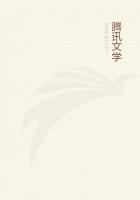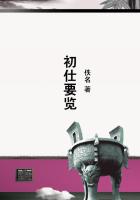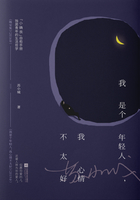Hence the object of smell, too, is an affection of nutrient substances (which fall within the class of Tangibles), and is also an affection of the audible and the visible; whence it is that creatures have the sense of smell both in air and water. Accordingly, the object of smell is something common to both of these provinces, i.e. it appertains both to the tangible on the one hand, and on the other to the audible and translucent. Hence the propriety of the figure by which it has been described by us as an immersion or washing of dryness in the Moist and Fluid. Such then must be our account of the sense in which one is or is not entitled to speak of the odorous as having species.
The theory held by certain of the Pythagoreans, that some animals are nourished by odours alone, is unsound. For, in the first place, we see that food must be composite, since the bodies nourished by it are not ******. This explains why waste matter is secreted from food, either within the organisms, or, as in plants, outside them. But since even water by itself alone, that is, when unmixed, will not suffice for food- for anything which is to form a consistency must be corporeal-, it is still much less conceivable that air should be so corporealized [and thus fitted to be food]. But, besides this, we see that all animals have a receptacle for food, from which, when it has entered, the body absorbs it. Now, the organ which perceives odour is in the head, and odour enters with the inhalation of the breath; so that it goes to the respiratory region. It is plain, therefore, that odour, qua odour, does not contribute to nutrition; that, however, it is serviceable to health is equally plain, as well by immediate perception as from the arguments above employed; so that odour is in relation to general health what savour is in the province of nutrition and in relation to the bodies nourished.
This then must conclude our discussion of the several organs of sense-perception.
One might ask: if every body is infinitely divisible, are its sensible qualities- Colour, Savour, Odour, Sound, Weight, Cold or Heat, [Heaviness or] Lightness, Hardness or Softness-also infinitely divisible? Or, is this impossible?
[One might well ask this question], because each of them is productive of sense-perception, since, in fact, all derive their name [of 'sensible qualities'] from the very circumstance of their being able to stimulate this. Hence, [if this is so] both our perception of them should likewise be divisible to infinity, and every part of a body [however small] should be a perceptible magnitude.
For it is impossible, e.g. to see a thing which is white but not of a certain magnitude.
Since if it were not so, [if its sensible qualities were not divisible, pari passu with body], we might conceive a body existing but having no colour, or weight, or any such quality; accordingly not perceptible at all. For these qualities are the objects of sense-perception. On this supposition, every perceptible object should be regarded as composed not of perceptible [but of imperceptible]
parts. Yet it must [be really composed of perceptible parts], since assuredly it does not consist of mathematical [and therefore purely abstract and non-sensible] quantities. Again, by what faculty should we discern and cognize these [hypothetical real things without sensible qualities]? Is it by Reason? But they are not objects of Reason; nor does reason apprehend objects in space, except when it acts in conjunction with sense-perception. At the same time, if this be the case [that there are magnitudes, physically real, but without sensible quality], it seems to tell in favour of the atomistic hypothesis; for thus, indeed, [by accepting this hypothesis], the question [with which this chapter begins] might be solved [negatively]. But it is impossible [to accept this hypothesis]. Our views on the subject of atoms are to be found in our treatise on Movement.
The solution of these questions will bring with it also the answer to the question why the species of Colour, Taste, Sound, and other sensible qualities are limited. For in all classes of things lying between extremes the intermediates must be limited. But contraries are extremes, and every object of sense-perception involves contrariety:
e.g. in Colour, White x Black; in Savour, Sweet x Bitter, and in all the other sensibles also the contraries are extremes. Now, that which is continuous is divisible into an infinite number of unequal parts, but into a finite number of equal parts, while that which is not per se continuous is divisible into species which are finite in number. Since then, the several sensible qualities of things are to be reckoned as species, while continuity always subsists in these, we must take account of the difference between the Potential and the Actual. It is owing to this difference that we do not [actually] see its ten-thousandth part in a grain of millet, although sight has embraced the whole grain within its scope; and it is owing to this, too, that the sound contained in a quarter-tone escapes notice, and yet one hears the whole strain, inasmuch as it is a continuum; but the interval between the extreme sounds [that bound the quarter-tone]















